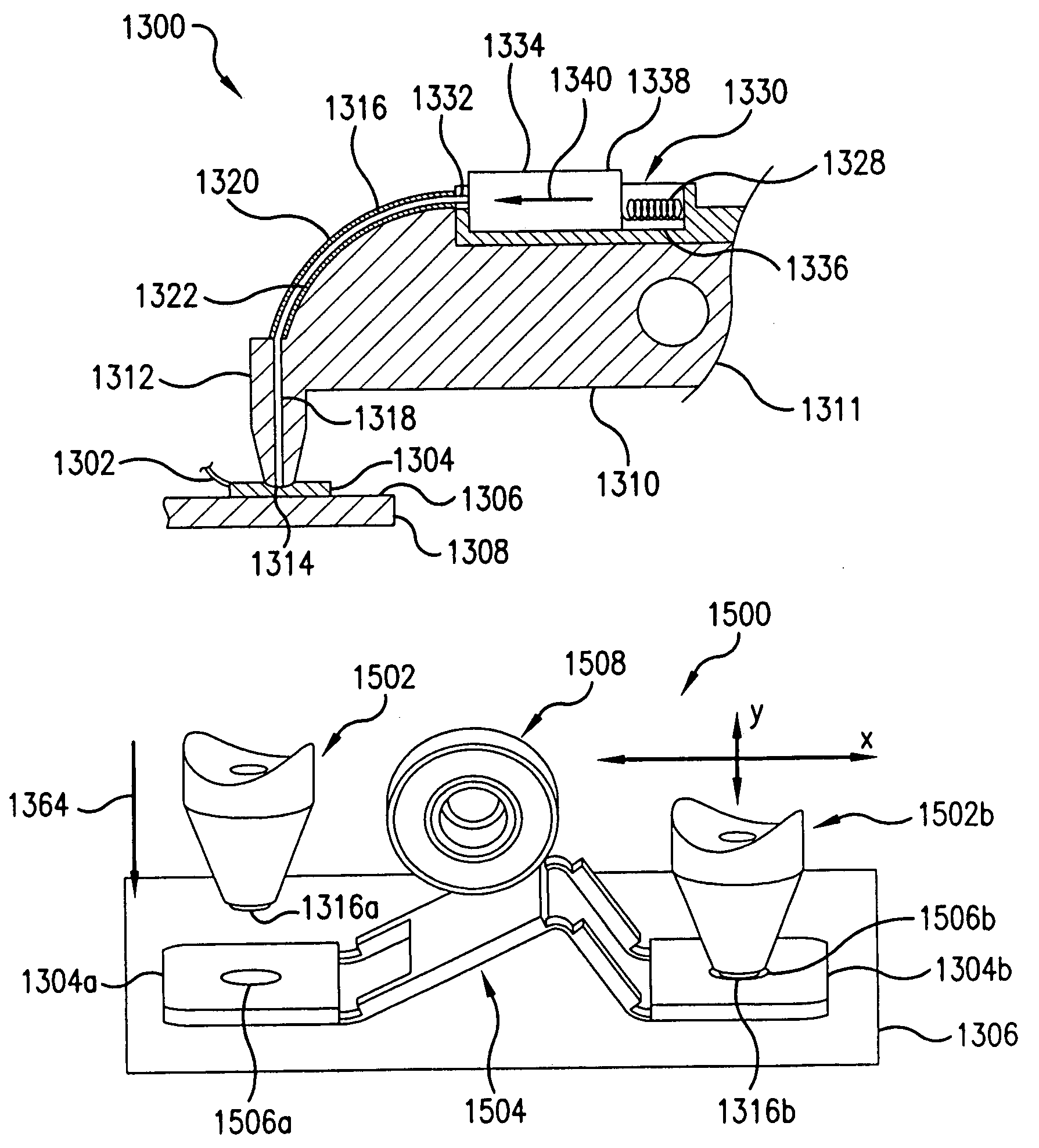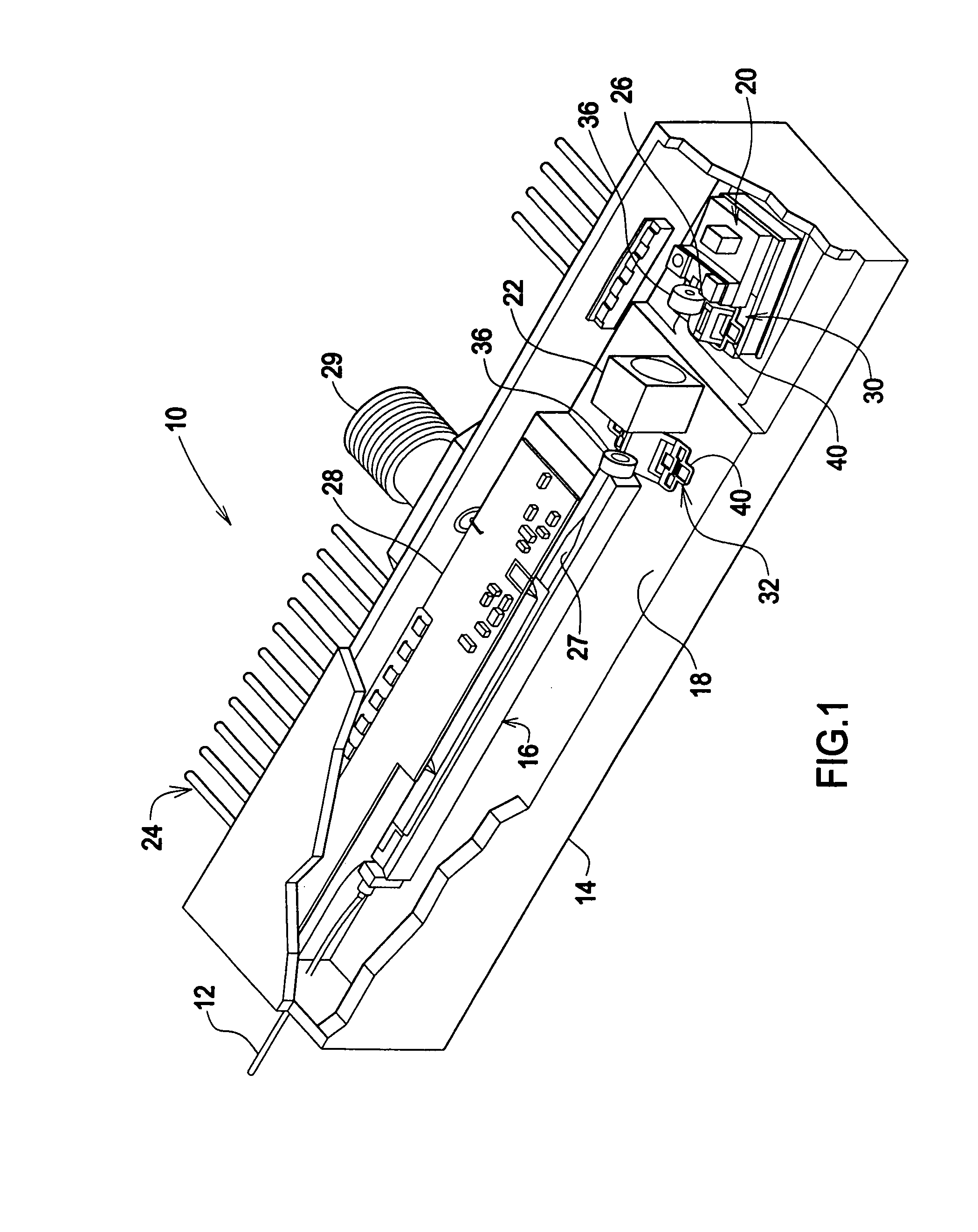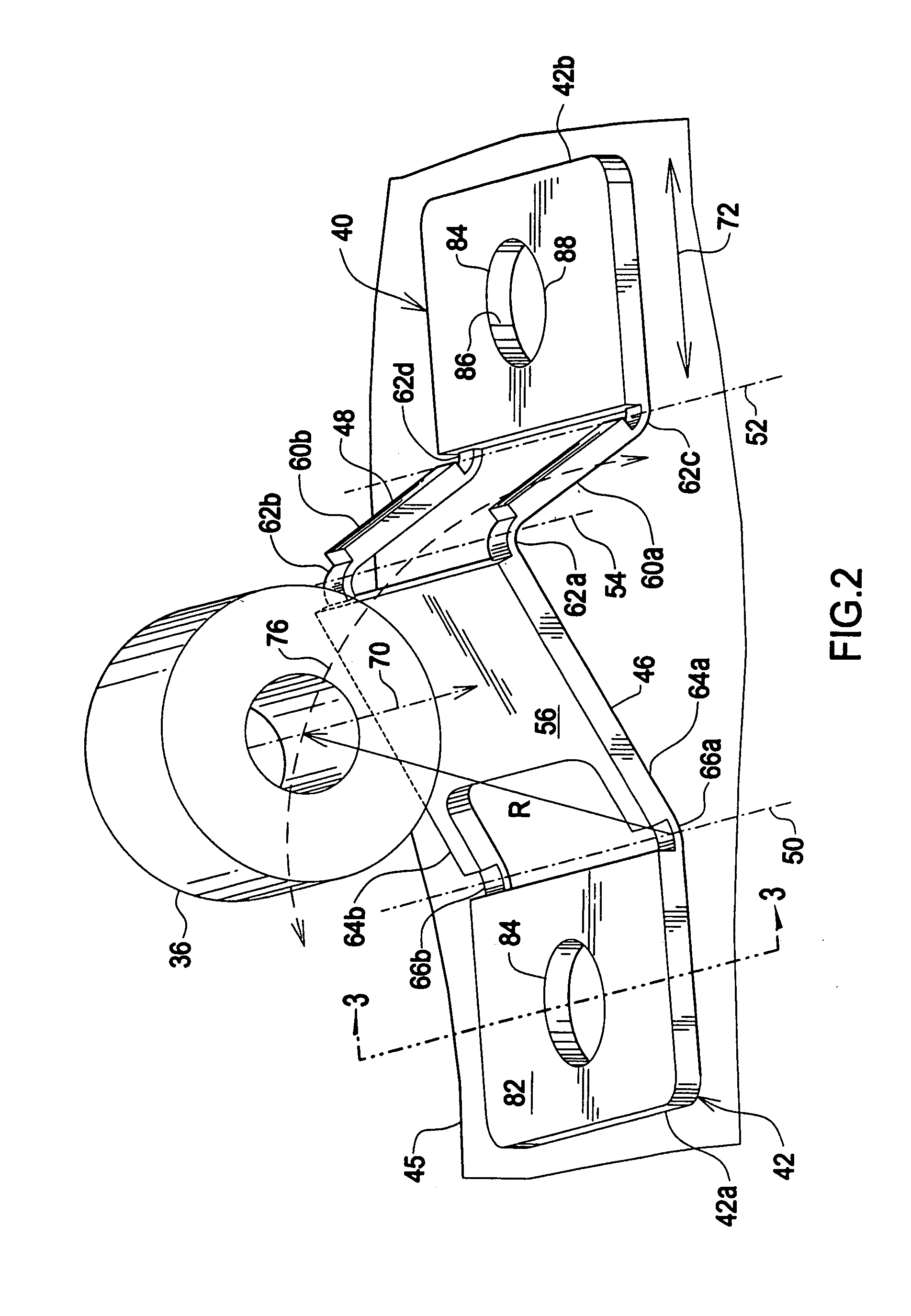Sub-micron adjustable mount for supporting a component and method
a technology of adjustable mounts and components, applied in the direction of instruments, soldering devices, manufacturing tools, etc., can solve the problems of inability to precisely predict or control the strain of hammering, inevitably relies on some level of trial and error, and the technique introduced by jang is likely, at best, to be time-consuming and at least potentially unreliabl
- Summary
- Abstract
- Description
- Claims
- Application Information
AI Technical Summary
Benefits of technology
Problems solved by technology
Method used
Image
Examples
Embodiment Construction
[0107]Turning now to the figures wherein like components are indicated by like reference numbers throughout the various figures, attention is immediately directed to FIG. 1 which illustrates an optical assembly generally indicated by the reference number 10 and produced in accordance with the present invention. It is noted that the figures are not to scale, being enlarged for purposes of illustrative clarity. Further, it is to be understood that naming conventions developed with reference to one or more of the figures such as “upper” and “lower” are adopted in this description and the appended claims for descriptive purposes only and are in no way intended as being limited in view of varying device orientations. FIG. 1 is a partial cutaway view of optical assembly 10 illustrating its structure. In the present example, optical assembly 10 comprises a transmitter module which is configured for modulating laser light and thereafter injecting the modulated light into an optical fiber 12...
PUM
| Property | Measurement | Unit |
|---|---|---|
| diameter | aaaaa | aaaaa |
| diameter | aaaaa | aaaaa |
| thick | aaaaa | aaaaa |
Abstract
Description
Claims
Application Information
 Login to View More
Login to View More - R&D
- Intellectual Property
- Life Sciences
- Materials
- Tech Scout
- Unparalleled Data Quality
- Higher Quality Content
- 60% Fewer Hallucinations
Browse by: Latest US Patents, China's latest patents, Technical Efficacy Thesaurus, Application Domain, Technology Topic, Popular Technical Reports.
© 2025 PatSnap. All rights reserved.Legal|Privacy policy|Modern Slavery Act Transparency Statement|Sitemap|About US| Contact US: help@patsnap.com



